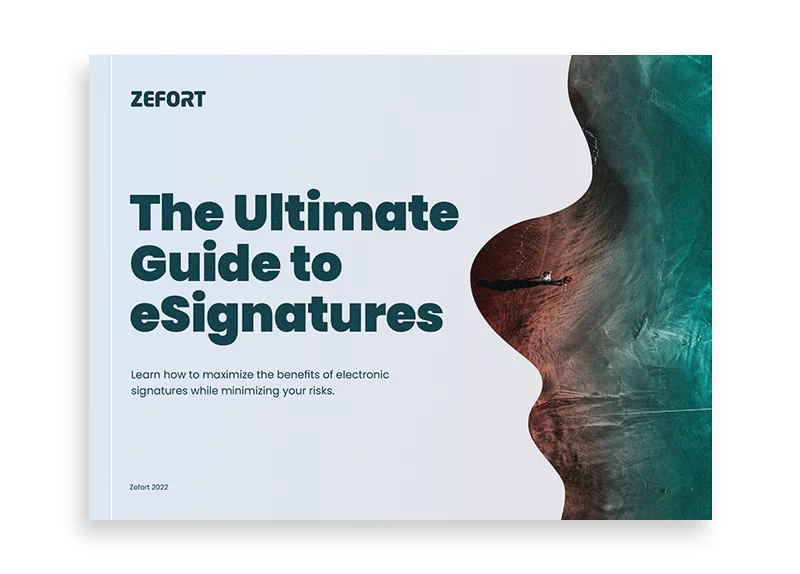Accessibility in SaaS and CLM: A global commitment, a local responsibility
Accessibility in SaaS is no longer optional. In North America, TechCrunch estimates companies invest $10–16 billion annually in accessibility-focused design.
In Europe, the European accessibility act (EAA) sets clear deadlines and consequences:
- Software available before June 28, 2025, must be made accessible by 2030.
- Software available after June 28, 2025, must be accessible immediately.
- According to Fieldfisher, non-compliance may result in fines of up to €1 million in some EU Member States, alongside prohibitions on product distribution or service provision.
For legal and procurement professionals, this isn’t just regulatory pressure; it’s a practical shift. Accessibility determines whether every end user, including people with disabilities, can sign, review, and manage contracts independently.
To explore what this means in practice, we spoke with Mariana Perez, Product Designer at Zefort, who shared insights on accessibility in SaaS, the risks of ignoring it, and how Zefort is building for the future.
What accessibility means in CLM and SaaS
Mariana: Accessibility is about making software usable for everyone across all ages, abilities, and circumstances. That includes permanent disabilities like blindness, but also temporary ones – for example, a broken arm – or situational ones, like being in a noisy environment. In contract management, it means ensuring everyone can read, understand, and act on a document, whether visually, by listening, or through alternative input methods.
Why accessibility matters for legal and procurement teams
Mariana: With the EAA, non-compliance is no longer an option. If a CLM system isn’t accessible, organizations risk complaints, forced software changes, and reputational damage. Beyond compliance, choosing an accessible tool signals values such as diversity, inclusion, and responsibility. For teams handling sensitive contracts, that matters a lot.
Accessibility non-compliance has a price
Fieldfisher notes that EU Member States may impose fines up to €1 million for non-compliance, as well as prohibitions on product distribution or service provision. The risk isn’t just theoretical; it’s financial and operational.
How does accessibility improve the contracting experience in CLM?
Mariana: Accessibility and user experience go hand in hand. Simple language, simple flows, and adequate contrast benefit everyone. Practical features, like keyboard navigation and proper screen reader support make contract work usable to anybody. They don’t just help people with disabilities; they improve usability for all users.
Small design choices, big impact in CLM accessibility
Mariana: Small design choices can make a big difference. For example, in Zefort Sign, a screen reader can read the whole contract aloud. Users can then navigate with the keyboard and choose to sign or decline. That is more accessible than singing with a signature which requires fine motor skills. That makes the process independent for non-visual users.
Or take heading hierarchy: if structured correctly, it lets screen readers guide people through contracts much more efficiently.
How does Zefort approach accessibility today, and what’s next?
Mariana: Right now, our signing experience is accessible to end users. Next, we’re focusing on forms and templates, as external parties frequently use them. After that, we’ll audit the entire CLM system.
We combine automated checks with manual tests, like completing flows using only a keyboard and a screen reader. Over time, we aim to test our changes with people of different disabilities to validate their effectiveness in practice.
Strengthening trust through accessibility
Mariana: Transparency builds trust. We’re open about which parts of Zefort are accessible today, which aren’t yet, and what’s coming. That shows we’re committed to continuous improvement, not quick fixes. Our clients can be confident they’re investing in a system that will stay compliant and usable long-term.
You can read our full accessibility statement here.
Building accessibility into CLM from the start
Mariana: Overlay tools are temporary. They don’t fix issues in the code, so they’re not a sustainable solution. Building accessibility starting from design and development is a better way to ensure compliance, usability, and trust now and in the future.
🔑 Key takeaways
- Accessibility = independence: Every user, including those with disabilities, must be able to sign and review contracts without barriers.
- Compliance = business protection: The EAA requires action by 2025, with possible fines up to €1M for non-compliance in the EU.
- Zefort = continuous improvement: Accessible signing today, forms and templates next, full CLM audits underway.
- Trust = transparency: Sharing what’s accessible now, and what’s still in progress, builds long-term confidence.




